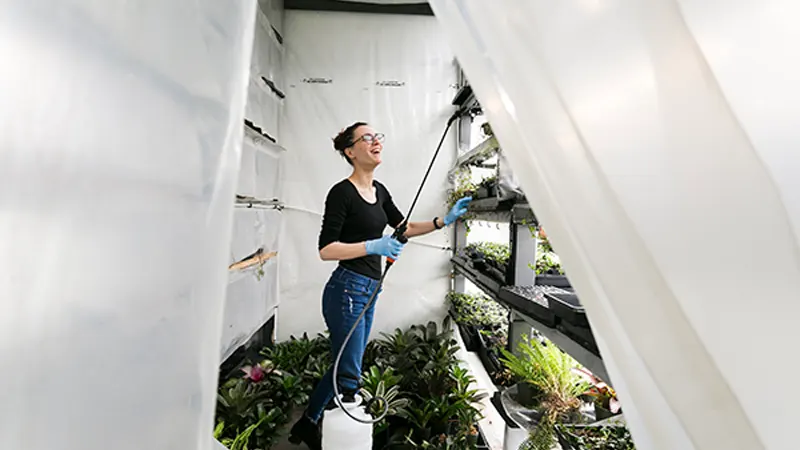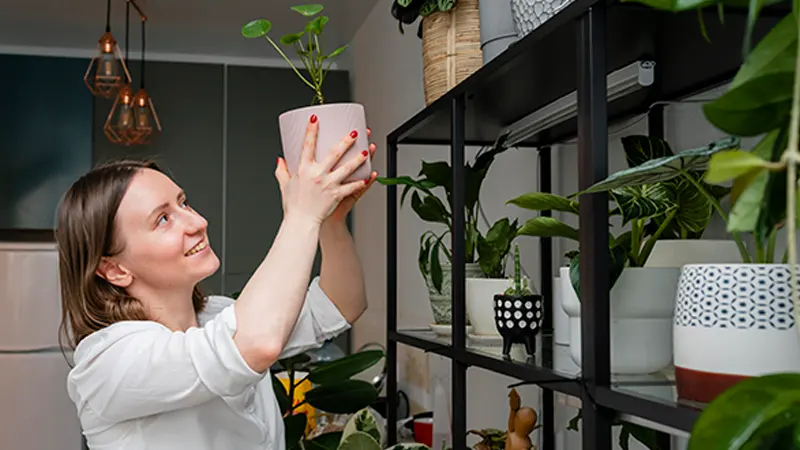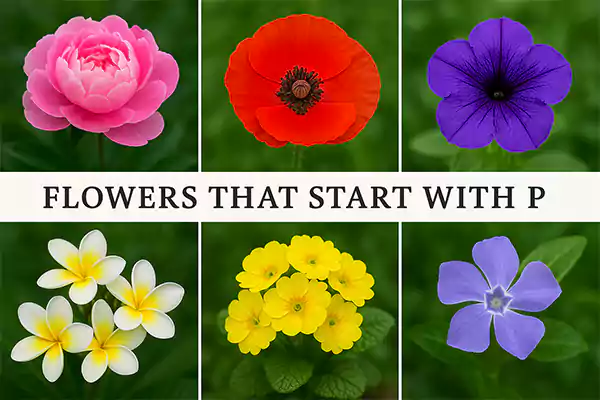
From picturesque Pansies to pretty Peonies, flowers that start with P paint the garden with grace, elegance, and charm. Not only do they add a pop of color to the landscape, also manage to convey distinct emotions like love, endurance, resilience, and good luck.
Whether you wish to explore these species for your balcony garden or for floral arrangements, discovering these stunning blooms will feel like knowing nature’s masterpieces.
Moving further, let us quickly uncover some prettiest petals of nature and embark on this floral journey!
10 Alluring Flowers That Start With P – Start Your Floral Journey
Are you also planning to create a personalized balcony garden? Let us quickly explore some fascinating flowers that start with P. The list below covers a wide range of blooms that will surely enhance the whole vibe of any garden space.
Pansy
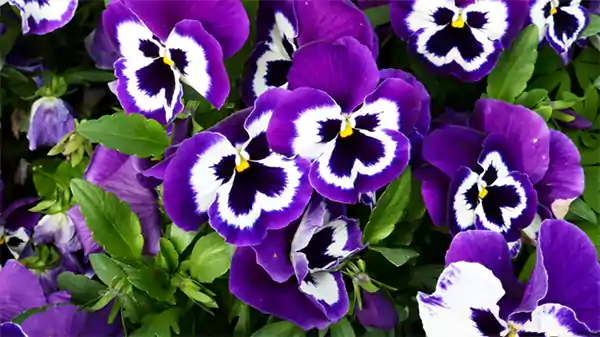
One of the most eye-pleasing flowers that start with P is the Pansy. It is a hardy, low-growing species that originally belongs to the violet family. This purple plant can be easily grown under diverse environmental conditions, and its heart-shaped leaves are its main attraction.
| Native Range: Europe and Western Asia |
| Hardiness Zone: 4-8 USDA |
| Botanical Name: Viola x wittrockiana |
| Growing Conditions: Requires full sun exposure to flourish. Prefers growing in fertile, permeable soil, with moderate watering to keep the soil evenly moist. |
Peony
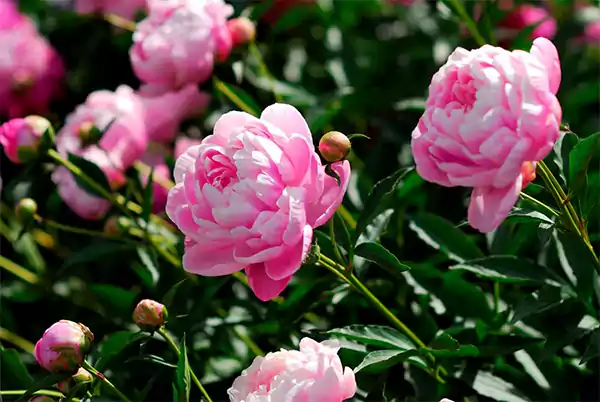
If you walk past a species that has large, showy, and vibrant blooms, chances are that it is a Peony. The fragrant blossoms of this flower starting with the letter P, are widely appreciated, and its beauty is insanely mesmerizing.
Growing up to 7 feet tall, the Peony flower is an ornamental garden species often used for floral decoration.
| Native Range: Mostly grown in the Northern Hemisphere |
| Hardiness Zone: 3-8 USDA |
| Botanical Name: Paeonia |
| Growing Conditions: Choose a spot where the flower can receive ample sunlight. Needs well-draining, fertile soil which is slightly acidic and does not require much watering once established. |
Petunia

If you wish to add a pop of color to your garden, the ideal flower that starts with P is Petunia. This flowering hanging plant bears trumpet-shaped blooms and is quite easy to care for.
Petunias are annual herbs belonging to the nightshade family and are popularly grown as border cover plants to attract pollinators like bees, butterflies, and hummingbirds.
| Native Range: South America |
| Hardiness Zone: 2-11 USDA |
| Botanical Name: Petunia x hybrida |
| Growing Conditions: Prefers growing in full sun exposure but can also tolerate partial shade. Needs moist, permeable but slightly acidic soil to flourish with moderate watering. Avoid making the soil soggy to prevent root rot. |
Phlox
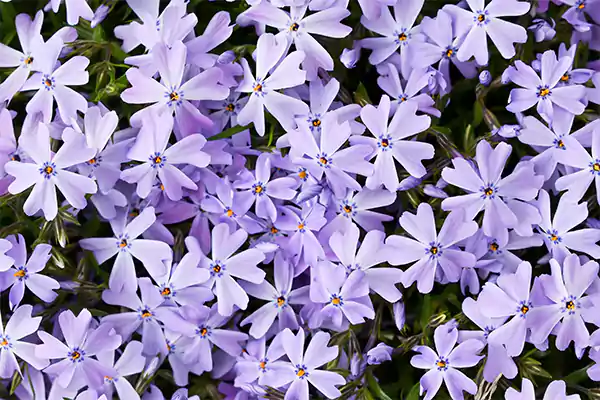
Phlox is a diverse genus of flowering plant, liked by many garden enthusiasts for its vibrant and clustered blooms. Some cultivars of the genus, like the ‘Emerald Blue’ creeping Phlox, form a low and dense mat and are popularly grown as ground cover plants.
Although this flower that starts with a P is low maintenance, it is quite prone to certain pests and requires attention.
| Native Range: North America (some subspecies are grown in Siberia) |
| Hardiness Zone: 3-9 USDA |
| Botanical Name: Depends on the particular species |
| Growing Conditions: Most species prefer growing under full sunlight to partial shade. Nutrient-rich, permeable soil type with average watering works wonders for the bloom. |
Pincushion Flower
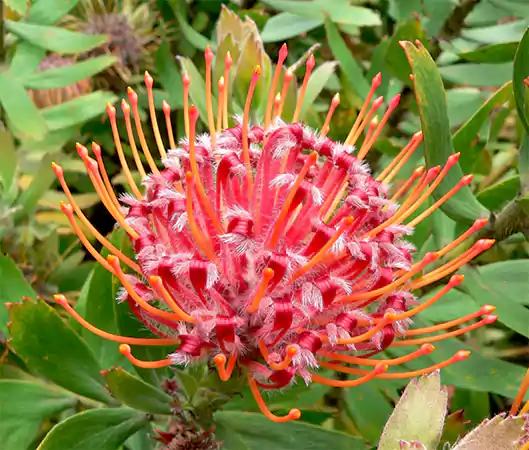
Named after their unique appearance, the Pincushion flower is a perennial species and is mostly used for decorative purposes. This exotic-looking, rare flower is admired for its flower head and is also pollinator-friendly.
Available in many hues, the Pincushion flower is the perfect option if you wish to add a head-turning bloom to your garden.
| Native Range: Europe, Asia, and Northern Africa |
| Hardiness Zone: 5-9 USDA |
| Botanical Name: Scabiosa |
| Growing Conditions: Requires a minimum of 6 hours of direct sunlight with some shade during hot summer days. It should be planted in loamy yet permeable soil with moderate to minimal watering. Consider adding organic compost to the soil for optimal growth. |
Peruvian Lily

Peruvian Lilies do not belong to the true lily family, but are popular for their blooms that look almost similar to real ones. Often found in shades of pink, orange, white, purple, and yellow, this spring flower has a strong stem and grows up to a height of 1–3 feet tall.
Prized for their trumpet-shaped blooms, this flower manages to uplift the vibe of any garden space.
| Native Range: South America, specifically in Chile, Brazil, and Argentina |
| Hardiness Zone: 7-12 USDA |
| Botanical Name: Alstroemeria |
| Growing Conditions: Grows best in full sunlight but can also thrive under partial shade. During winter, the bloom needs morning sun to prevent wilting. Water only when the top 2–3 inches of the soil feel dry, and use well-draining acidic soil with general-purpose fertilizer. |
Poppy

Available in almost every shade, Poppy is one of the most exquisite flowers starting with P. Being a popular August birth flower, the bloom symbolizes peace and resilience.
It is globally applauded for its culinary and medicinal uses and is often grown to add a burst of life to any landscape. The showy blooms of Poppy are truly eye-pleasing and are widely used for floral decorations.
| Native Range: Varies by the species |
| Hardiness Zone: 2-11 USDA |
| Botanical Name: Papaver |
| Growing Conditions: Most poppy varieties prefer growing under bright sunlight; partial afternoon shade can also be beneficial. Requires watering only during the initial growing stages and should be planted in permeable soil, as it is susceptible to root rot. |
Primrose
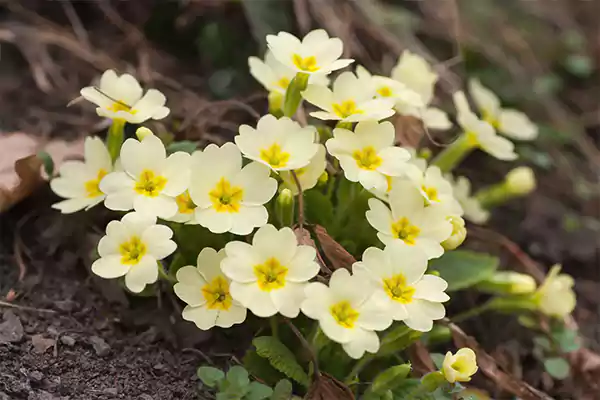
Primrose is a genus of herbaceous perennial belonging to the Primulaceae family. These blooms come in a variety of colors and often grow in clusters.
If you wish to create a pollinator-friendly garden, the colorful and fragrant flowers of the genus attract bees and butterflies. Primrose, also known as, February birth flower, indicates the arrival of spring and is often gifted to convey fresh beginnings.
| Native Range: Northern Hemisphere (particularly in temperate regions of Asia, Europe, and North America. |
| Hardiness Zone: 3-8 USDA |
| Botanical Name: Primula |
| Growing Conditions: Primrose prefers growing in a cool and moist environment. The amount of sunlight required varies from species to species. It should be planted in well-draining soil with organic compost, and moderate watering is required only until the plant establishes. |
Protea
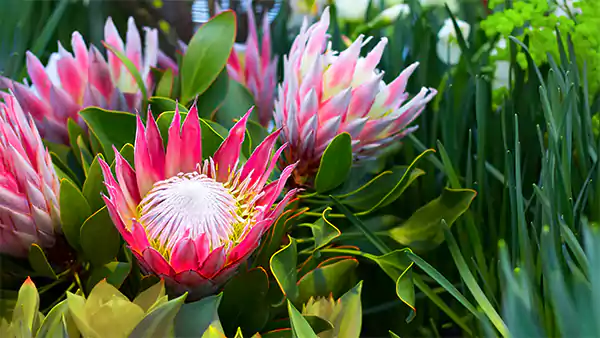
The captivating blooms of Protea are simply irresistible. Known for their pink flowers, the genus has glossy, leather-like leaves that create a stunning contrast in the garden. Since the blooms produce nectar in large quantities, it is also commonly called “sugar bushes”.
Being an evergreen species, the blooms of Protea are used for floral arrangements or to make fresh bouquets. The genus prefers growing in a breezy location to avoid fungal diseases and pest infestation.
| Native Range: Southern Hemisphere (South Africa’s fynbos region) |
| Hardiness Zone: (not specific) |
| Botanical Name: Protea L. |
| Growing Conditions: Protea requires an ample amount of sunlight for optimal growth and flowering. Water regularly during the initial growing stages, and adjust the frequency later to avoid root rot. Try using a permeable soil type with an organic compost mix. |
Pentas

One of the most picturesque flowers that begins with the letter P is Pentas. It is a flowering plant and bears stunning pink blooms in large, showy clusters.
Commonly called as Egyptian Star Flower and the Egyptian Star Cluster, this bloom can instantly enhance the aesthetics of any place.
The genus can be planted in a container as a houseplant, does not require much care, and is a favorite among pollinators as it attracts bees, butterflies, and hummingbirds.
| Native Range: Eastern Africa and Southern Arabia |
| Hardiness Zone: 10-11 USDA |
| Botanical Name: Pentas lanceolata |
| Growing Conditions: Though Pentas can tolerate partial shade, abundant sunlight is needed for optimal growth. Grows best in well-draining, fertile soil with a pH between 6 and 7. Water the plant regularly, only to keep the soil evenly moist, but avoid waterlogging. |
Additional List of Flowers Beginning With the Letter P
As per Forbes, if you are trying to jazz up your living space or simply want to change the vibe of your workspace, there is nothing better than adding flourishing blooms. Here’s a list of some alluring plants that start with P and will surely enhance the vibe of any space.
| Serial No | Flower Name | Image | Key Aspects |
| 11 | Penstemon |  |
|
| 12 | Passionflower |  |
|
| 13 | Periwinkle | 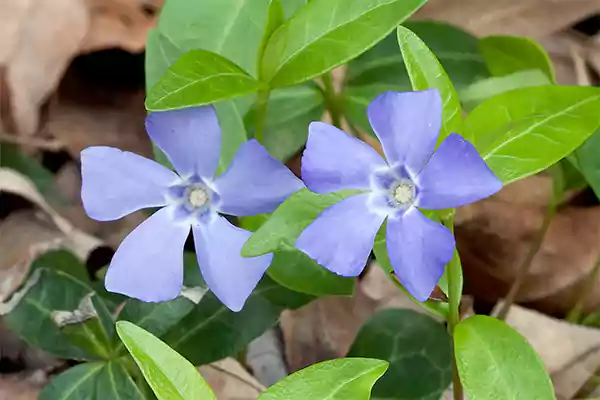 |
|
| 14 | Petticoat Daffodil | 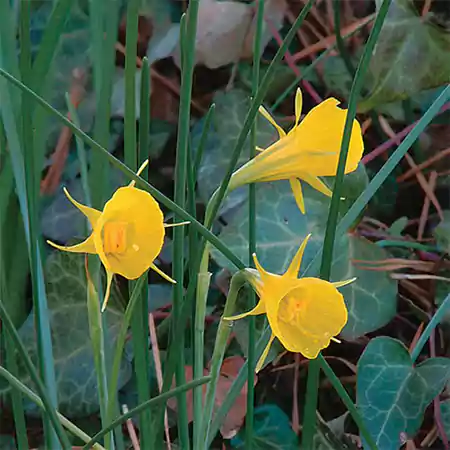 |
|
| 15 | Pheasant’s Eye | 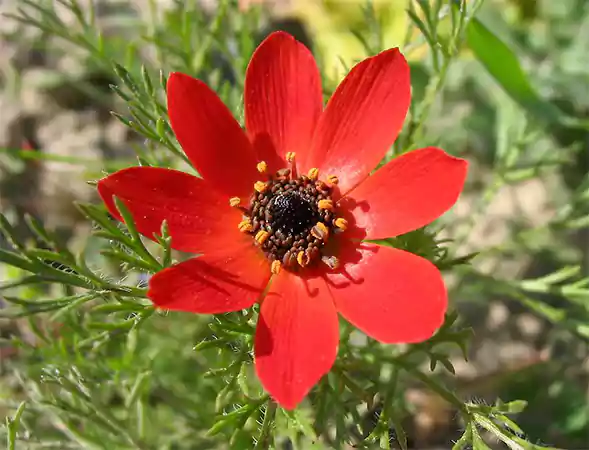 |
|
| 16 | Pincushion Protea |  |
|
| 17 | Pinks | 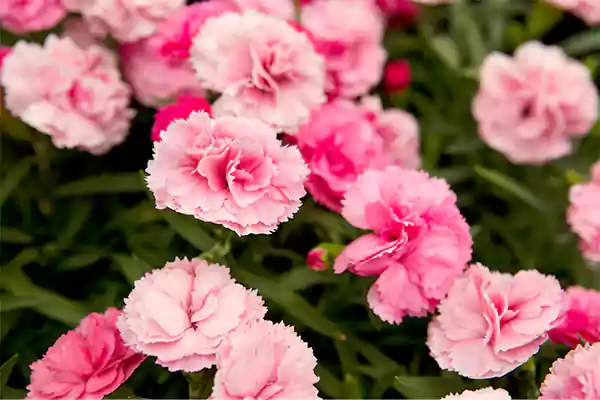 |
|
| 18 | Prairie Smoke | 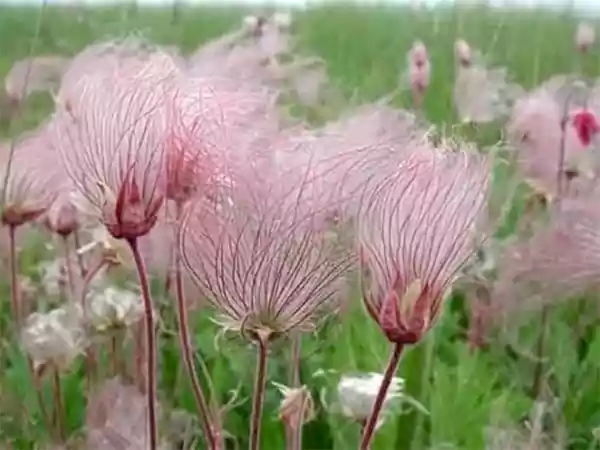 |
|
| 19 | Pulsatilla | 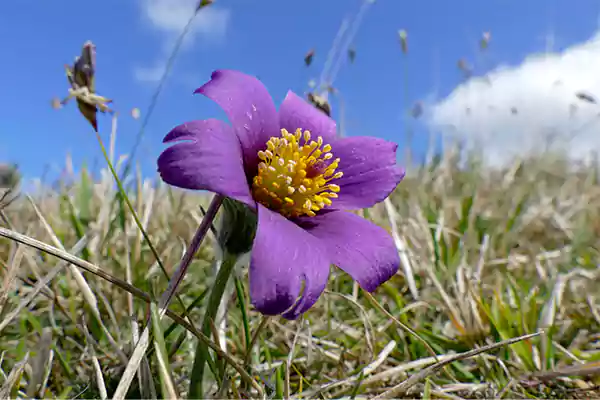 |
|
| 20 | Painted Daisy |  |
|
| 21 | Potentilla |  |
|
| 22 | Portulaca |  |
|
| 23 | Persian Buttercup | 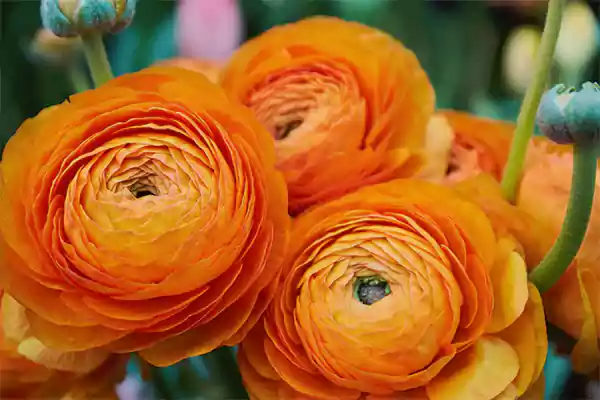 |
|
| 24 | Prickly Pear Cactus | 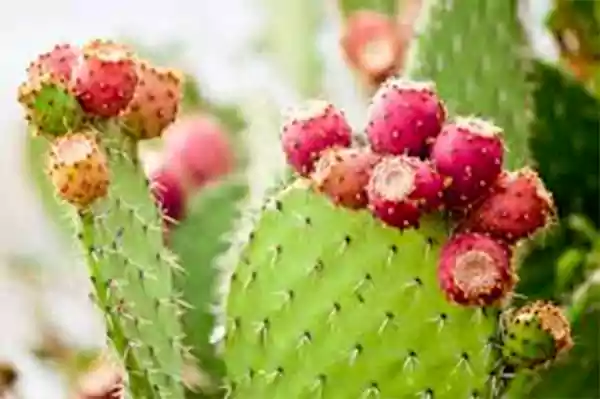 |
|
| 25 | Parrot Lily | 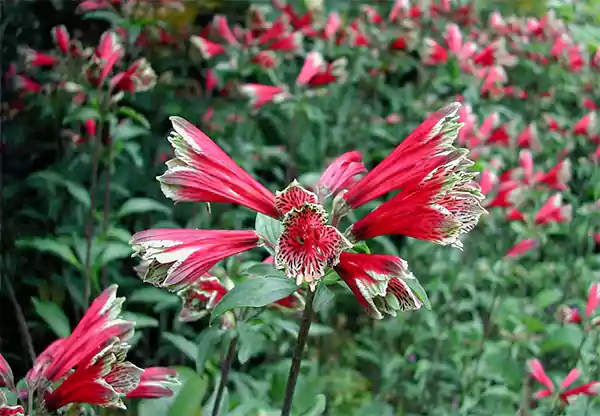 |
|
| 26 | Polyanthus | 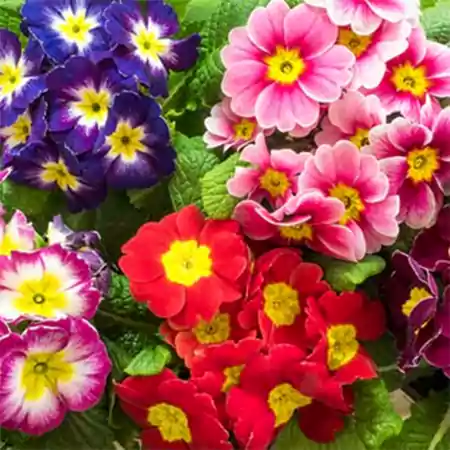 |
|
| 27 | Prairie Gentian |  |
|
| 28 | Platycodon | 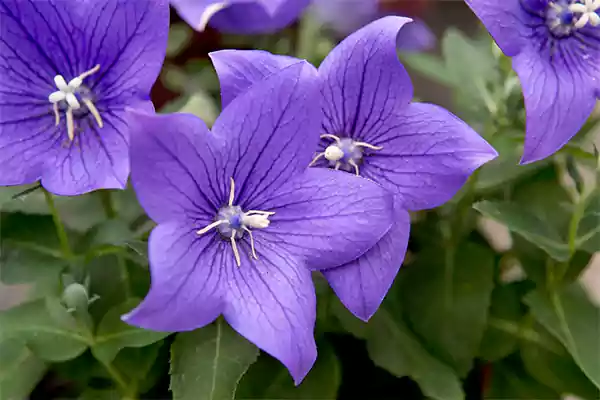 |
|
Whether graceful, bold, or delicate, flowers that start with the letter P bring endless elegance to any landscape. Go ahead and fill vibrancy in your life with the aforementioned blooms.
Conclusion
As we wrap our journey of flowers that start with P, it is quite clear that this group includes some of the most beautiful and meaningful blooms. From delicate Primrose to exquisite Polyanthus, each genus has its own unique characteristic and has the ability to uplift the vibe of any space, be it indoors or outdoors.
So whether you are exploring these blooms for your own knowledge or planning to gift them to someone you adore, these flowers will surely add a personal and poetic touch to your floral world!
What is a flower that starts with P?
Many flowers start with the letter P, such as Peony, Petunia, Primrose, and Pansy. Some more examples are Passionflower, Pincushion flower, and Poppy.
What are some flowers that start with the letter “P” and attract butterflies?
Some common examples of flowers beginning with the letter P that are known to attract butterflies and other pollinators are Poppy, Primrose, Passionflower, and Peony.
What “P” flower is the easiest to grow?
Although almost all P flowers are easy to grow and care for, Pansy, out of all, is the most low-maintenance species. The species can be easily pruned and does not require any special care treatment.
What “P” flower symbolizes love?
Peony, also being the most popular flower that begins with the letter P, is often used to convey love, infatuation, or fondness. While other flowers also represent a range of emotions, Peonies are often gifted to portray romantic gestures.
What flower begins with P and grows quickly?
Though many fast-growing flowers start with P, some common examples are Phlox and Peonies. These two are also known as early blooming spring flowers because of their fast-growing characteristic.

